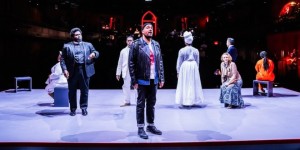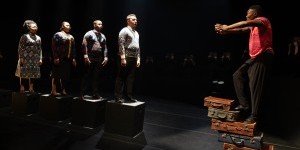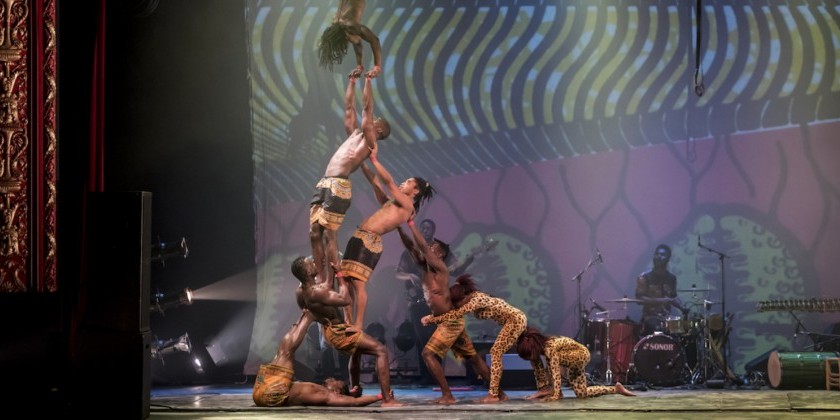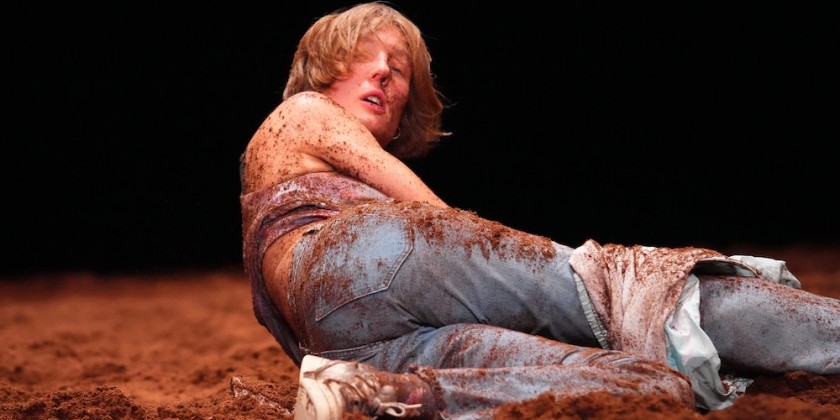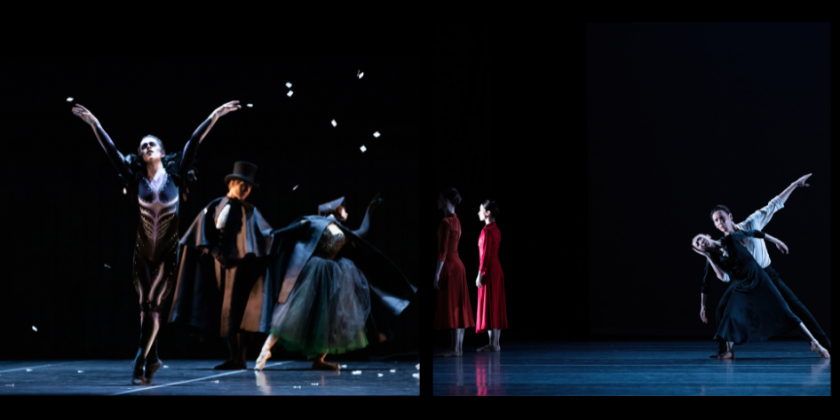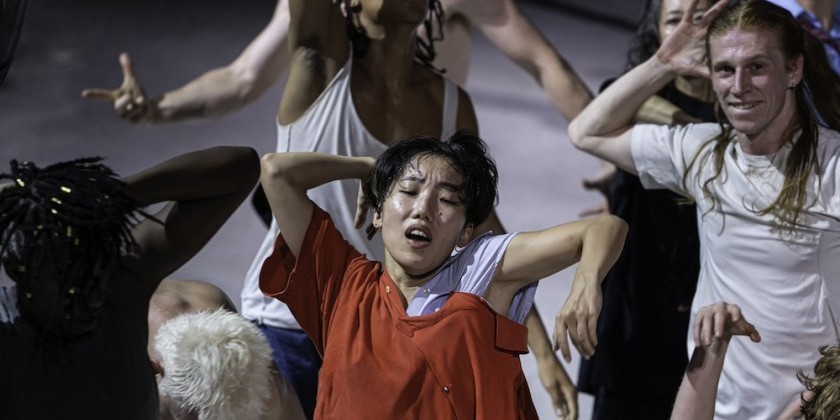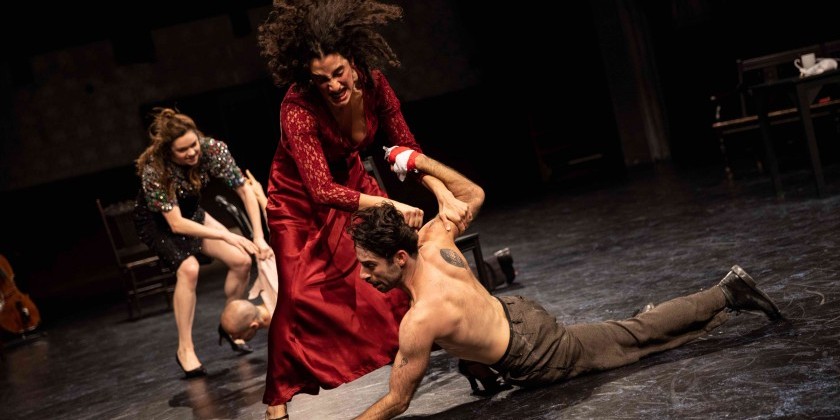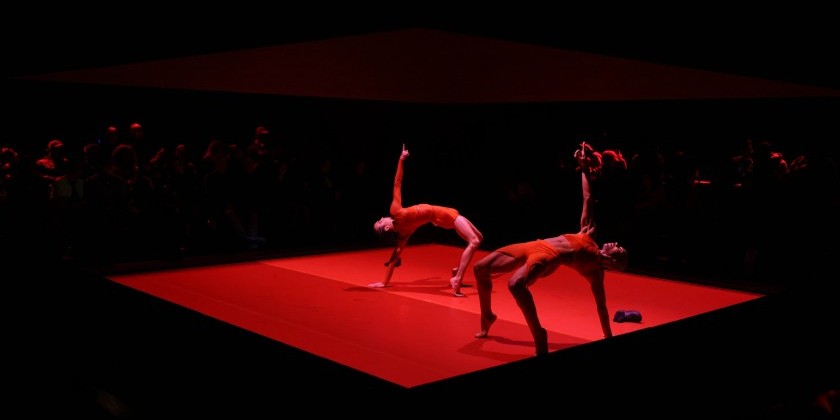IMPRESSIONS: Tanztheater Wuppertal Returns to BAM with “Água” by Pina Bausch
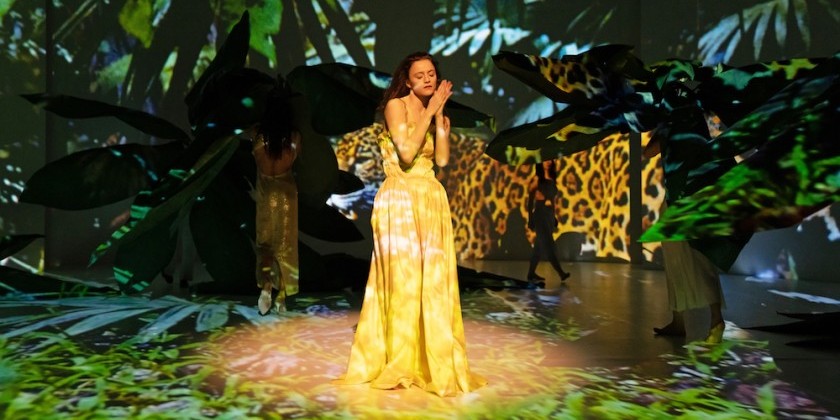
Directed and choreographed by Pina Bausch
Set and video design by Peter Pabst
Costume design by Marion Cito
Musical collaboration with Matthias Burkert and Andreas Eisenschneider
Collaboration with Marion Cito, Irene Martinez-Rios, Robert Sturm
Assistant Set Design: Nicole Bauer
Assistant Costumes: Birgit Stoessel
Rehearsal Directors: Azusa Seyama-Prioville, Daphnis Kokkinos, Robert Sturm
Dancers: Emma Barrowman, Dean Biosca, Naomi Brito, Maria Giovanna Delle Donne, Taylor Drury, Letizia Galloni, Nayoung Kim, Alexander López Guerra, Nicholas Losada, Jan Möllmer, Milan Nowoitnick Kampfer, Franko Schmidt, Julie Shanahan, Ekaterina Shushakova, Oleg Stepanov, Denis Klimuk, Julian Stierle, Christopher Tandy, Tsai-Wei Tien, Sara Valenti, Tsai-Chin Yu
March 3-19,2023
Returning to BAM for the first time in six years, Tanztheater Wuppertal presented the US premiere of Água, an erotic and thought-provoking work choreographed by the late icon of expressionist dance Pina Bausch (1940-2009).
Originally created in 2001 during a residency in Brazil, Água was inspired by the surrounding landscape, wildlife, and culture. Bausch used the country’s vibrant colors and sounds to explore themes of sexuality, self-image, and agency from a uniquely female perspective. Grainy images and looped videos from Brazil are projected on to three curved white walls that envelope the stage from floor to ceiling. In this illusory subtropical world, the dancers connect to their animalistic nature.
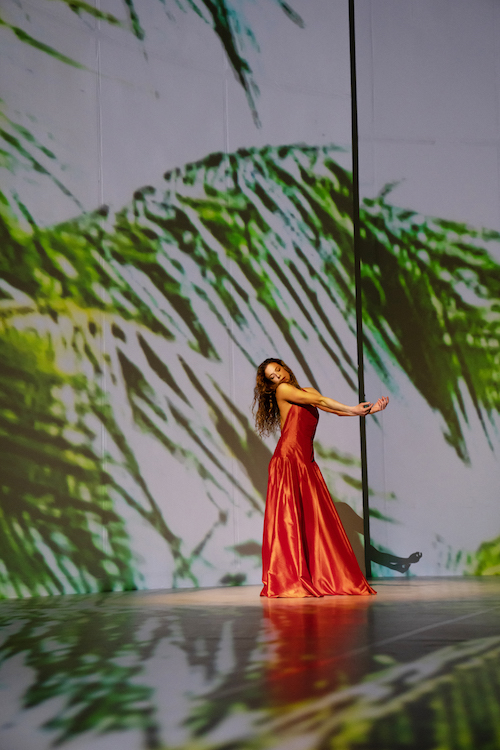
Like most of Bausch’s work, Água carries us into a farcical alternate-reality that exaggerates stereotypical female and male archetypes. We expect to see hyper-feminine women in long dresses, accompanied by threatening-looking men clad in suits with shoulder pads; but in 2023 it’s impossible to ignore the exclusion of a non-binary/queer perspective. Still, a more nuanced take on Bausch’s work understands her explicit use of gender and sexuality to subvert, ridicule, and question the status quo.
Unsurprisingly, Água begins with a woman in an evening gown. She slurps and sucks on a juicy orange as a man holds a mic to her mouth, occasionally adding a moan to the wet symphony. It’s only one minute into the show and I’m already thinking of SEX.
In Água sex is a lens through which we contemplate the underrepresented female gaze: how women perceive men perceiving women. Bausch used this perspective to explore women’s contentious relationships with themselves and their experience of desiring and being desirable. We are spectators to the familiar and outlandish game of courtship through a montage of vignettes that range from highly explicit to highly abstract.
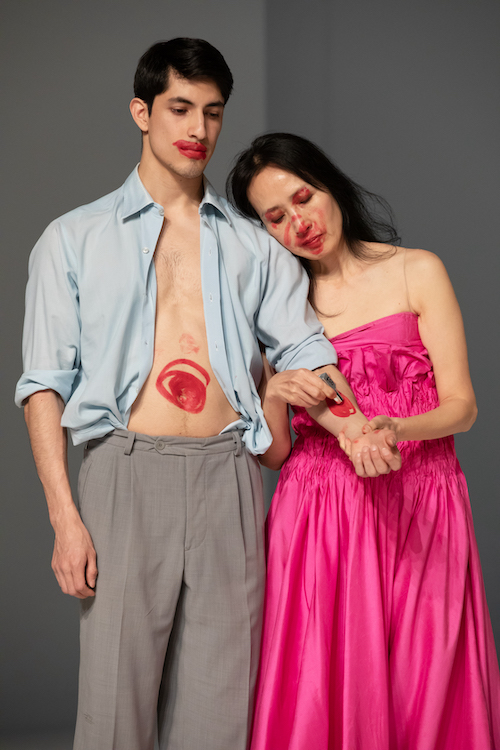
Juxtaposing the plausible and implausible, we encounter believable characters acting out predictable scenarios, but with dark and comical twists. In one scene, dancer Ekaterina Shushakova saunters across the stage, chest splayed, stopping to greet several passing men as they first plant kisses on each of her breasts, and then each cheek. We laugh because this would never happen in real life, yet the scenario scratches at an unspoken truth.
At the heart of Água a chaotic character, played brilliantly by Julie Shanahan, speaks directly and seductively to the audience. She erratically describes a string of impulsive desires, one being how she wants to knock over a table and saw off its leg. She stomps off stage to materialize said table then proceeds to saw at it. As she attempts to turn her wishes — no matter how outlandish— into reality, she keeps repeating, “It’s impossible.” Underscoring her facetious hysteria lies a deep longing for freedom. Her solo ends as she tells us she doesn’t want to have to be beautiful anymore… She would like to disappear to the back of the stage and dance for herself.
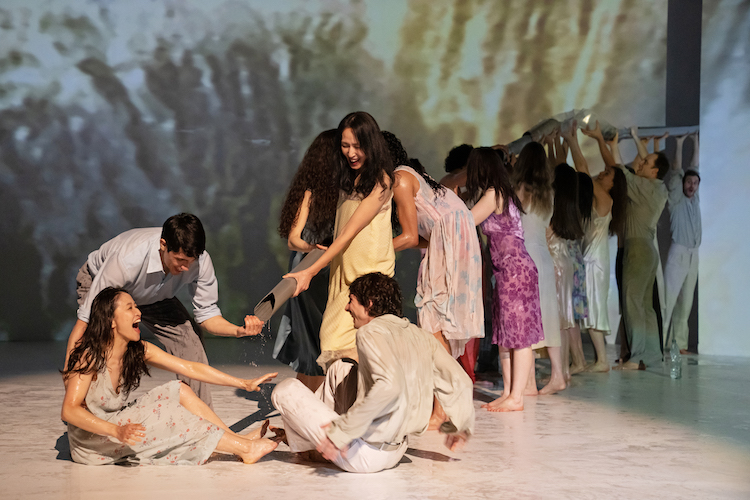
Though the theatrical elements in Bausch’s work are easier to recall from memory, perhaps for their humor and context, the movement is what leaves a lasting emotional impression. Maybe that’s why Bausch wanted the dancers to repeat the same movement phrase for entire five-minute songs…so it would sink in?
Repetitive and long as the dance sections can be , Bausch’s women move with breathtaking ferocity and freedom. With hair perfectly undone and falling in front of their eyes, they are wild and unfettered. Their steps melt away and eventually we forget that we’re watching dance. Instead, we feel the impetus of each movement. Every jump is a suspension of hope; every fall demonstrates fearless abandon.
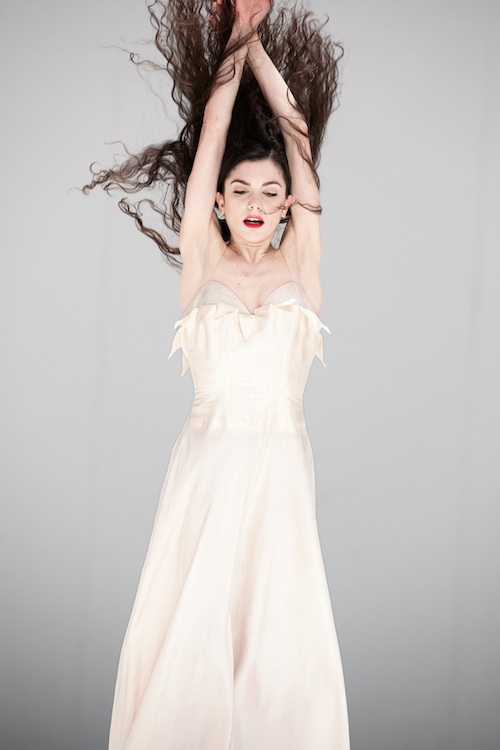
I’ve always wondered why Bausch insisted on women wearing ridiculously impractical dresses in her choreography. Yet watching Água for the first time, I believe I understand what her objective might have been. Although long dresses might be seen as restrictive, or even oppressive, no garment can contain the boundless potential of these women. Underneath every meticulous outfit, and the other innumerable external forces caging her in, there lives a person with her own thoughts, feelings, passions, and above all, free will. Untamed by the suffocating expectations of society, Água is the ephemeral oasis where women unabashedly satiate their thirst for physical pleasure, power, and freedom.






